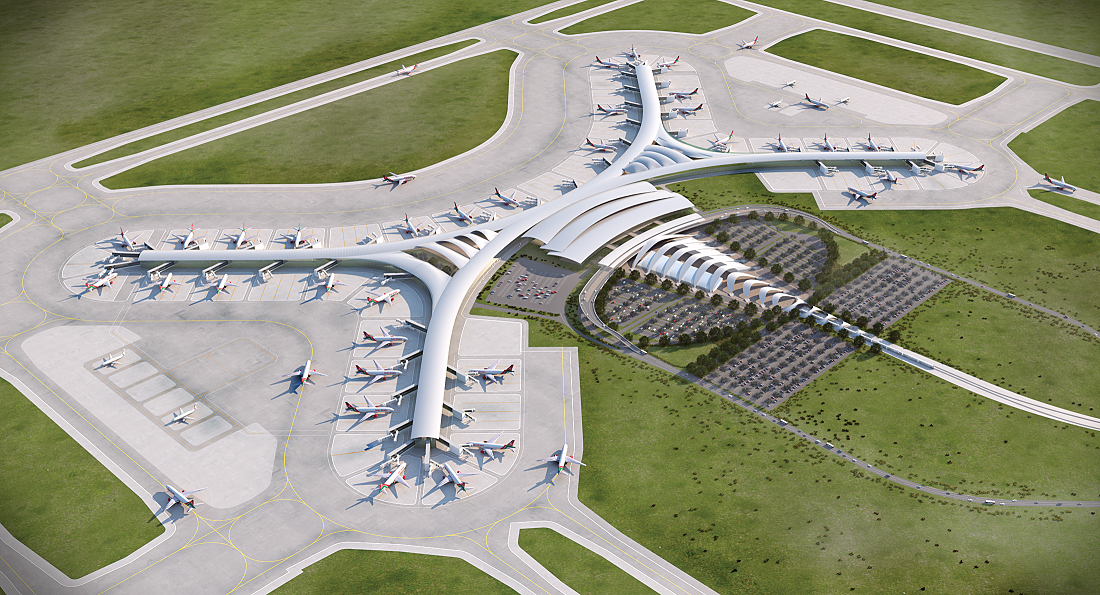
“As first world economies seek new territories for innovation, trade expansion, conference tourism and investment, Kenya, as one of the leading vibrant stable economies in Africa, has provided a hugely viable and attractive option,” states Dominic Ngigi, Corporate Affairs Manager of Kenya Airports Authority (KAA). “This, coupled with numerous other factors, has helped contribute to the buoyant projections for the aviation industry in the country over the next 20 years, with global passenger traffic and air cargo each projected to grow by 5.0 percent per annum.”
In the last year alone Kenya has played host to the initiation of several landmark projects, from the creation of Konza City, dubbed Africa’s first silicon valley, to the development of road, rail, port and airport infrastructure. Such advances have resulted in the entry of new airlines from what are referred to as “non-traditional destinations” looking to maximise on trade and tourism opportunities in the country. Furthermore, the discovery of oil in the region and the much anticipated LAMU to Southern Sudan project will also contribute to the growth of aviation in Kenya.
Established through an act of parliament in 1991, KAA has since provided the country’s airports and airstrips with safe, reliable and efficient management. Today it boasts an employee base of 1,820 individuals split across numerous departments including, projects and engineering services, marketing and business development, finance, legal, corporate planning and strategy, procurement and logistics, and operations, safety and security.
“The stability of the Kenyan economy has enabled KAA to post good operational results,” Ngigi continues. “The economy improved by 4.6 percent in 2012 and is projected to have expanded by 5.7 percent in 2013, and by a further six percent in 2014 en-route to the ten percent envisaged by Kenya Vision 2030. In 2013 Kenya saw passenger numbers reach 8,919,254, cargo volumes hit 294,353 metric tonnes and aircraft movements numbering 269,923. Going forward passenger traffic is projected to grow by five percent, cargo eight percent and fleet movement three percent per annum.”
With an increase is demand for aviation services comes the need to expand and in some cases modernise, and examples of this work can be found throughout KAA and across the various airports it manages. Perhaps the best examples of this work can be found occurring in and around Kenya’s main airport Jomo Kenyatta International (JKI).
One of the biggest ongoing undertakings is the building of the brand new Terminal 4 structure, a project which commenced in September 2010 at a cost of $93 million, the scope of which includes the construction of a three storey passenger terminal building with floor area of approximately 21,000 square metres. Terminal Unit 4 is due for partial completion in July 2014, at which point passengers will begin to use the new building, with full completion expected by 31 March, 2015. Terminal 4 will also feature an International Arrivals facility, a permanent facility providing arrival processing functions that will effectively make Terminal 4 an independent terminal.
In January of this year KAA signed a contract with M/s Roder of Germany to facilitate the construction of an interim domestic/international, arrival and departure terminal at JKI Airport. The $23 million contract will cover the building of a facility which, at a size of 10,000 square metres, will service some 2.5 million passengers per annum. The terminal itself is expected to serve these passengers for a total of five years, before then being converted for an alternative use.
Equally integral to the expansion of JKI is the construction of the airport’s second runway. Measuring 5,500 metres in length the new runway will allow the airport to support direct flights to New York. Its conceptual design phase commenced in August 2012 and was completed in February 2013. Kenya Airports Authority is today awaiting confirmation of funding from the government in order to proceed.
Elsewhere, JKI is also playing host to the renovation, modification and expansion of the ring building which encompasses Terminal Units 1, 2 and 3, as well as the airport’s arrival building. The rehabilitation is set to modernise and upgrade the current JKI terminals. This will include the demolition and reconstruction of the Arrivals Terminal building which was destroyed in a fire. The procurement process is currently underway, and the submission date for return of bids is 2 October, 2014.
It isn’t just JKI that is reaping the rewards of expansion and modernisation however. Elsewhere within the country KAA is overseeing a number of ongoing projects. These include at MOI International Airport, where the designing phase is underway in preparation for the rehabilitation of the runway, taxiways and apron of the airport, as well as the upgrade of the power distribution system, work that is expected to commence in April 2015.
At Kisumu International Airport work commenced in March 2012 to strengthen and widen the airport’s runway, cargo apron and car park, with completion expected in June 2014, while at Malindi Airport work is almost complete on the construction of a brand new terminal building.
“On a collective level we have also moved forward with the automation of our business processes, implementing the Enterprise Resource Planning (ERP) System and an Airport Operations Database (AODB) system within our airports,” Ngigi says. “The ERP-system has integrated all data and processes of the organisation into a unified system to ensure that KAA has accurate and real-time data and enhances a paperless system. The Airport Operational Database (AODB) on the other hand has facilitated the main airport processes, ensuring they are coordinated and synchronised and provides a centralised database for all airport stakeholders.”
A similar universal development has also seen KAA introduce an Identity Management System across the check-in kiosks present at its various airports. “The implementation of this system has greatly enhanced security within all of our airports,” Ngigi enthuses. “The new system has an added UV thumbprint security feature, making it difficult to forge or duplicate. The system is networked to all airports, enabling security officers to share vital information.”
Clearly always focused on the future, KAA has taken great efforts to develop many strategic partnerships designed to support business development within its airports. “To date the types of project that we have achieved through strategic Public Private Partnerships, based on a Build Operate Transfer (BOT) agreement, include transit shed warehouses, food courts and airline hangers,” Ngigi concludes. “Now we find ourselves in the process of sourcing for strategic partners that will assist in the development of all manner of new structures and facilities, from duty free facilities and airport transit hotels to medical facilities, in-flight catering facilities, transit shed warehouses and fuel service stations.”
Written by Will Daynes, research by Stuart Platt
DOWNLOAD
 KAA-Africa-T&L-Jun14-Bro-s.pdf
KAA-Africa-T&L-Jun14-Bro-s.pdf












